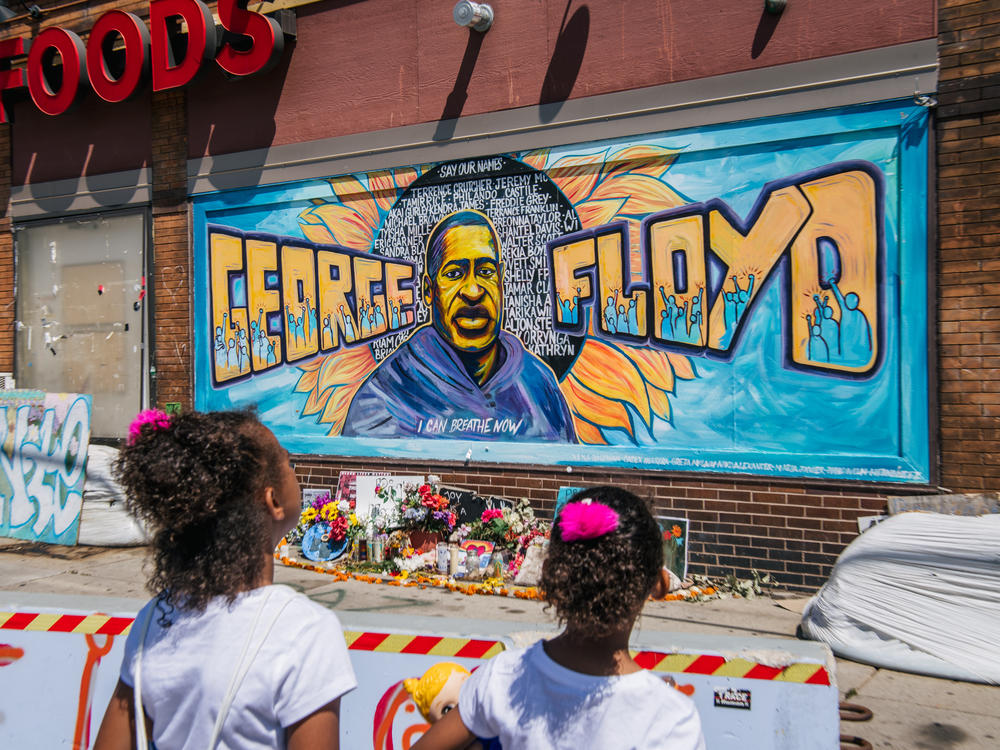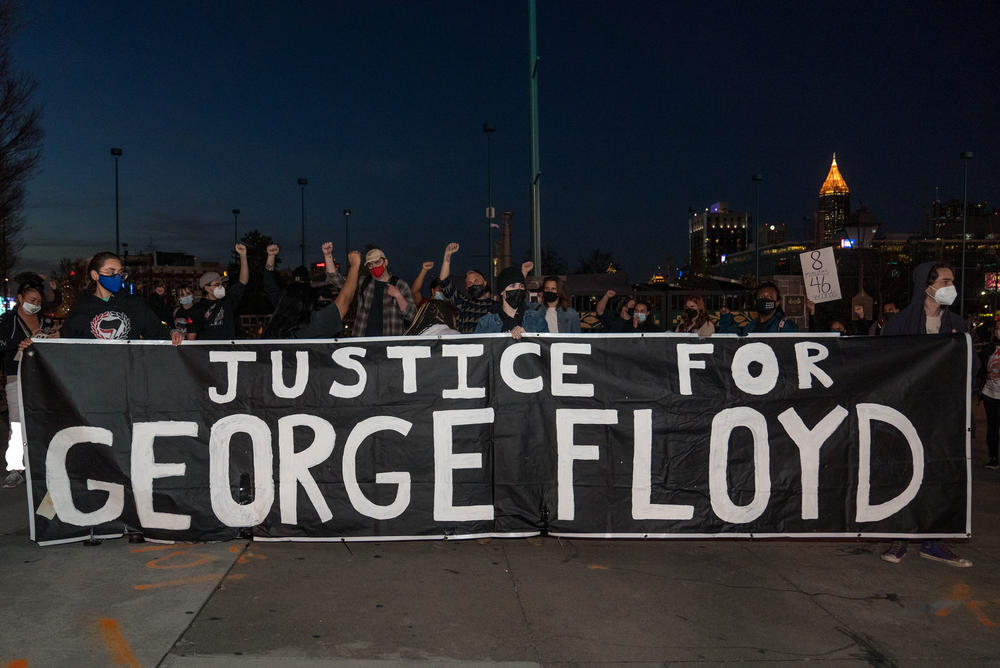Section Branding
Header Content
Many know how George Floyd died. A new biography reveals how he lived
Primary Content
Two years after his murder, most people still only know George Floyd for the way he died: Under the knee of a police officer in Minneapolis, Minn.
Many don't know how he lived – that he habitually told friends that he loved them, often in all-caps text messages; that he was self-conscious about his 6-foot-6-inch frame and that he suffered from lifelong claustrophobia; that he and his roommate in Minneapolis moved their mattresses into the living room right next to each other.
"They wanted to watch over each other. They had met each other in rehab, and they wanted to help ensure that they didn't stray," said Robert Samuels, a national political enterprise reporter for The Washington Post.
"What George Floyd understood was that they were in a society that was unforgiving toward their missteps, and they needed to look out for each other if they were going to make it through."
Samuels and his colleague Toluse Olorunnipa are the authors of the new biography, His Name Is George Floyd: One Man's Life And The Struggle For Racial Justice. The pair of reporters say the book is a story about how racism affected every part of Floyd's life, starting more than 150 years ago.
"We traced his ancestry back to a great-great-grandfather who was born and enslaved in North Carolina and, after the Civil War, was able to get his freedom," Olorunnipa said. "And he quickly amassed a great amount of wealth and land by working the land with his large family. But during the turn of the century, he lost all of his land to fraudulent tax sales and dubious business deals, and he was unable to transfer any of that to his descendants."
It was important to show why Floyd came into the world poor, Olorunnipa said.
"We saw George Floyd's family wealth be stripped away because of racism. And it impacted his life," Olorunnipa said. "It impacted his beginning and made him essentially come into the world born with two strikes as someone who was Black and poor in America."
Olorunnipa and Samuels spoke with NPR's All Things Considered about Floyd's personality, his awareness of his physical presence, his missteps and how he was on his way to coming back from them.
This interview has been edited for length and clarity.
Q&A Interview Highlights
Florido: One detail that struck me in your reporting and that comes up over and over throughout the book is he was really aware that his sort of mere presence as a big, Black man often scared people. Why did you dive into this aspect of his personality?
Olorunnipa: It's key to understanding those moments that we all saw on the video of Floyd's final moments, his fear of being assaulted by the police. From his earliest days, he would go into a room and shake everyone by hand just to put them at ease, just to say, you know, "I know I'm a big guy, I know my size may intimidate you, but, you know, look at me eye to eye. I'm OK, I'm not going to hurt you." And that was something that was a big part of his personality.
Samuels: It was also one of the cruelest contradictions about himself. By the time he gets to high school, he is this tall string bean of a guy. And immediately, people say, what you need to do is focus on playing football. And George Floyd was taught that maybe academics isn't the way to escape poverty, football is. But he was left with a body that – if it was not on a football field, it would be seen as something intimidating, threatening and, ultimately, one of the things that would make him seem as a threat to a police officer.
Your book doesn't shy away from Floyd's missteps. He was arrested on drug charges. He was addicted to opioids. He pled guilty to an armed robbery for which he spent years in prison. And his friends and family seem to speak to you pretty openly about his criminal record. What did they say about his struggles with the law?
Olorunnipa: They wanted us to understand that Floyd wasn't someone who wanted to take advantage of other people, but he also was someone who came from a community that was ravaged by drugs and where police officers often targeted for low-hanging-fruit arrest. Floyd was once arrested for just walking through his neighborhood – literally – for trespassing. He was across the street from his house. And he was stopped more than 20 times over the course of his life, including by six officers who were later charged themselves with breaking the law. So there is a sense of police corruption that took place.
Now, Floyd's own mistakes were definitely evident. And we got access to his diary entries and his writings in which he agonized over his mistakes and over the decisions that he made and the struggles that he had to try to break free from addiction and break free from his criminal past.
Well, the way he tried to reset his life was by moving to Minnesota in 2017 from Texas, where he'd lived for most of his life. And he signed up for a rehabilitation program designed for Black men. He found a roommate. He managed to rent this fancy townhome in the middle of a middle-class white suburb. For a while, things seem to be looking up for him in Minneapolis, didn't they?
Samuels: Yeah. This was his dream. He found a job. He was clean. He got this new townhome with his roommate, the person who he met in rehab. And a few months after he leaves rehab and he's living in this townhome, he comes home after a double shift of working, and he encounters his roommate unconscious and cold on the couch, Big E. And it turns out that Big E had overdosed.
And he died. And when that happened, the gregarious, friendly George Floyd that everyone knew, he went into isolation. And when one of his friends happened to run into him at a gas station, he tells his friend about what a dark place he was in. And that set George Floyd on a course to relapse.
As I read your book, I really came to understand what a special man George Floyd was. But I also sort of found myself wondering, was he unique or could you have written this kind of book about many other Black men?
Samuels: I think all of us know someone like George Floyd in our lives that you love being around, that can be a little hapless, that things in life have never fully gone their way, but they carry on a spirit of persistence. But one thing that we wanted folks to understand when they read the book is that the institutional hardships and barriers that were presented to George Floyd could have happened to almost any Black man living in America. And that's one of the terrifying things about it.
Toluse and I, we were very conscientious about how easy it can be to exploit Black pain as if that were the full story. But one of the wonderful things about writing about George Floyd is George Floyd himself, who never stopped trying, who remained persistent even though he acknowledged those barriers and acknowledged those mistakes. And that is a reason why I think so many people who knew him took up the cause for justice.
Copyright 2022 NPR. To see more, visit https://www.npr.org.
Bottom Content



